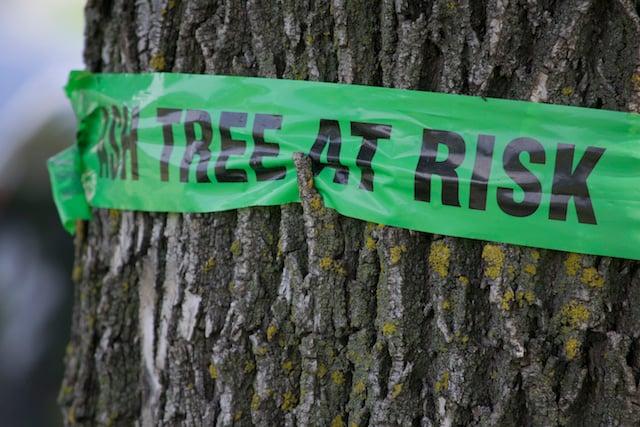It has been about 18 years since an exotic beetle known as the emerald ash borer (EAB) was first discovered in southeast Michigan. Thought to have arrived in the U.S. via cargo ships or flights, this invasive species of beetle has become known for more than its bright, metallic green look. In southeastern Michigan alone, emerald ash borers have killed over 30 million ash trees since 2002.
At Lush Lawn & Safari Tree, we want to empower southeast Michigan homeowners to preserve their ash trees and save on costly repairs. This begins with sharing insights on how to first spot a potential ash borer issue and then offering emerald ash borer treatment that gets you results.
Early Signs of Emerald Ash Borers in Trees
When emerald ash borers have infected an ash tree, one of the early signs you’ll see is small, D-shaped exit holes in either the tree’s trunk or its branches — or potentially both. Approximately ⅛ inch in diameter, these holes are created by adult emerald ash borers as they bore out of the tree. It’s often the case that balls of sap will ooze out of these exit holes, bringing further attention to them.
Research indicates that early detection of emerald ash borer tree infections has a considerable impact on the ability to save infected trees. (To put this into perspective, many infestations are detected when they are several years old — and by that point, the canopy and bark loss is often so significant that it’s too late for any type of emerald ash borer treatment to be effective.)
Consider the ripple effects of a case where an infected ash tree goes unnoticed for two years and subsequently dies. You could spend anywhere between $250 and $1,800 to have the dead ash tree removed, and if you opt to have the tree replaced, spend another $200 on a new tree, with the potential for added transport costs as well as professional planting costs.
An Emerald Ash Borer Treatment Plan That Works
If you notice early signs of EAB in your trees, it’s critical to take immediate action to avoid tree removal and replacement. In order to be effective, EAB treatments cannot be a one-time task. Instead, they must be a part of a strategic year-round program to eliminate existing infestations and prevent them from making a come back. That’s what we’ve developed at Safari Tree.
Our treatment program begins in spring with a dormant oil and fertilizer application. While the oil helps minimize early infestations, the fertilizer feeds the tree’s roots and strengthens it. Then, in the summer, three rounds of insecticides sprays are applied to kill EABs (and other hazardous insects) dwelling in your trees before they are able to reproduce and spread. The program ends with a fall fertilizer application and an anti-desiccant spray to help trees stay healthy and strong throughout the winter and be less susceptible to EAB attacks in the future.
Interested in getting a quote for our pest control services? Simply fill out this form and we’ll send you a free estimate.
